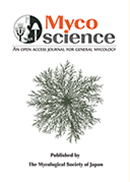Volume 55, Issue 2
Displaying 1-12 of 12 articles from this issue
- |<
- <
- 1
- >
- >|
Full paper
-
2014Volume 55Issue 2 Pages 79-88
Published: 2014
Released on J-STAGE: March 07, 2023
Download PDF (2272K) -
2014Volume 55Issue 2 Pages 89-97
Published: 2014
Released on J-STAGE: March 07, 2023
Download PDF (2214K)
Short communication
-
2014Volume 55Issue 2 Pages 98-102
Published: 2014
Released on J-STAGE: March 07, 2023
Download PDF (849K) -
2014Volume 55Issue 2 Pages 103-107
Published: 2014
Released on J-STAGE: March 07, 2023
Download PDF (1799K)
Note
-
2014Volume 55Issue 2 Pages 108-112
Published: 2014
Released on J-STAGE: March 07, 2023
Download PDF (1126K)
Short communication
-
2014Volume 55Issue 2 Pages 113-117
Published: 2014
Released on J-STAGE: March 07, 2023
Download PDF (1191K) -
2014Volume 55Issue 2 Pages 118-123
Published: 2014
Released on J-STAGE: March 07, 2023
Download PDF (1753K) -
2014Volume 55Issue 2 Pages 124-126
Published: 2014
Released on J-STAGE: March 07, 2023
Download PDF (1519K)
Full paper
-
2014Volume 55Issue 2 Pages 127-133
Published: 2014
Released on J-STAGE: March 07, 2023
Download PDF (749K) -
2014Volume 55Issue 2 Pages 134-143
Published: 2014
Released on J-STAGE: March 07, 2023
Download PDF (1473K)
Short communication
-
2014Volume 55Issue 2 Pages 144-148
Published: 2014
Released on J-STAGE: March 07, 2023
Download PDF (1125K)
Full paper
-
2014Volume 55Issue 2 Pages 149-157
Published: 2014
Released on J-STAGE: March 07, 2023
Download PDF (2138K)
- |<
- <
- 1
- >
- >|
